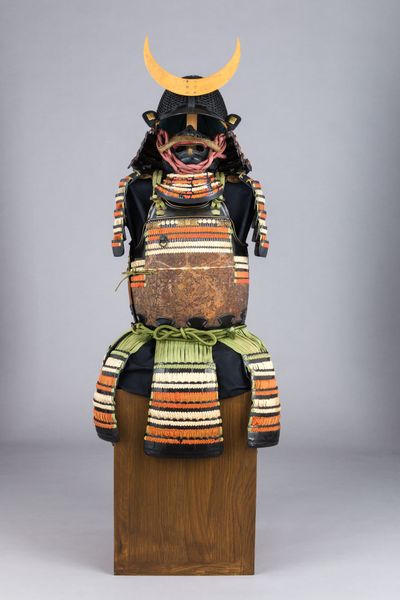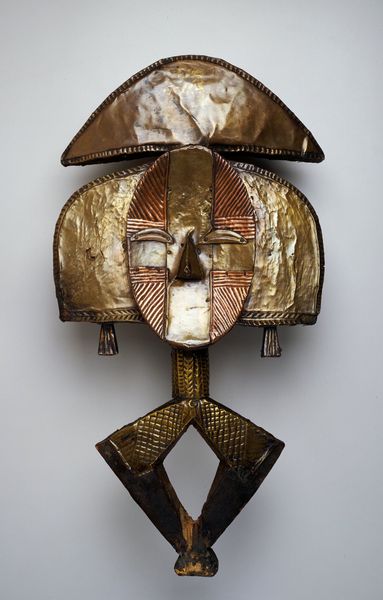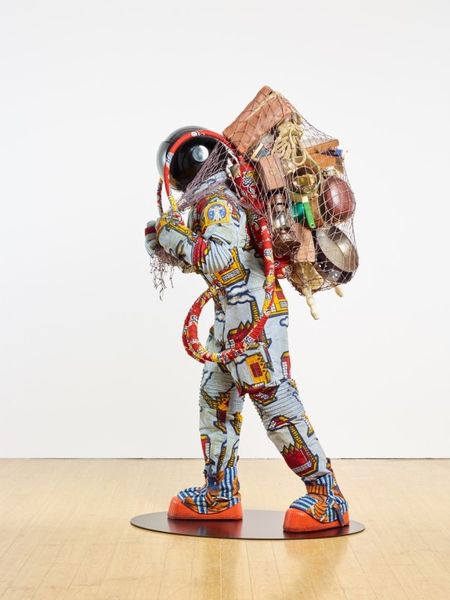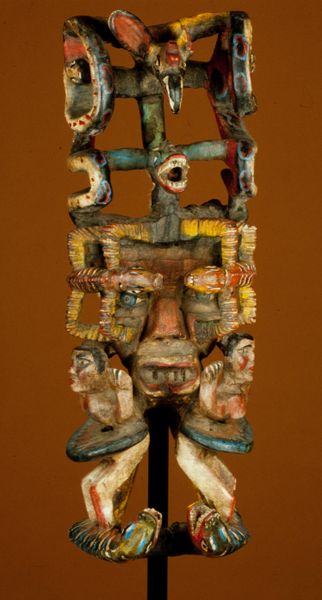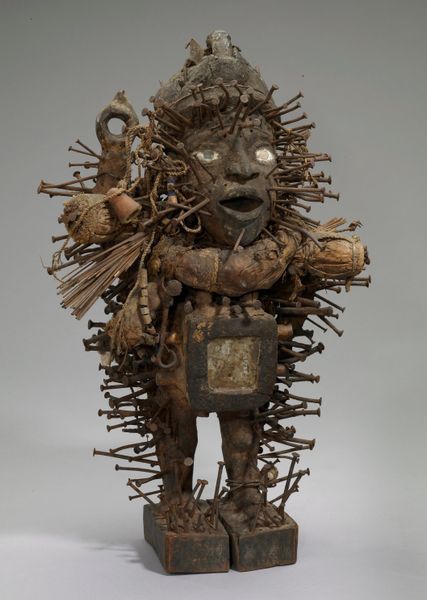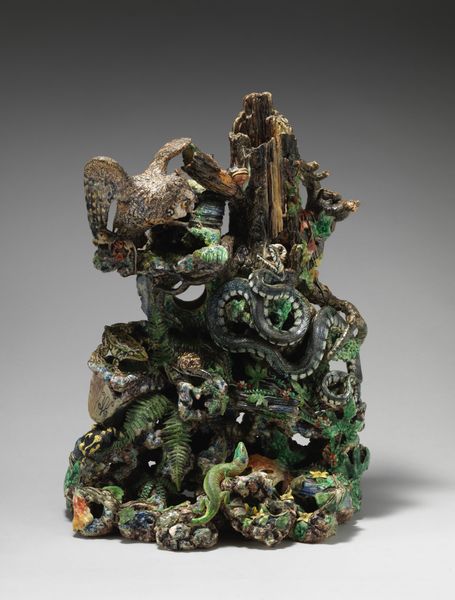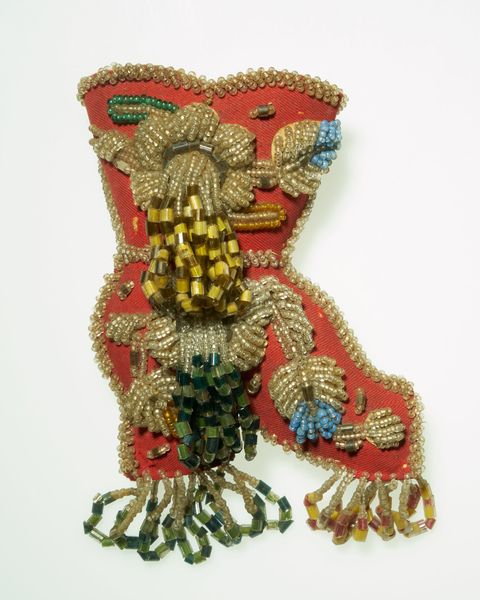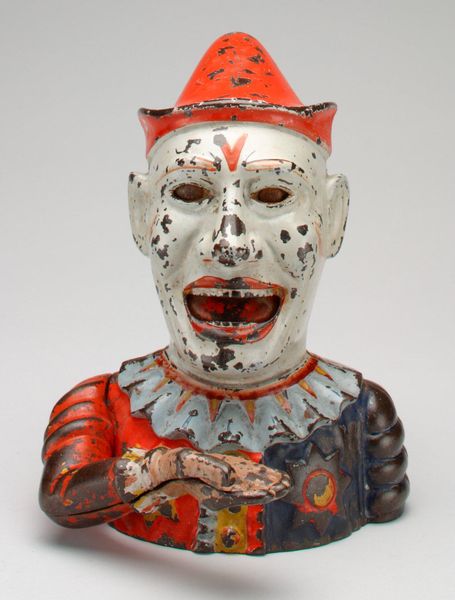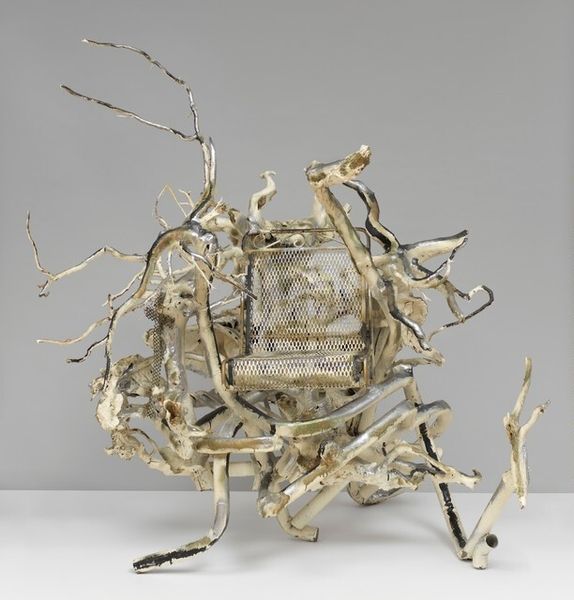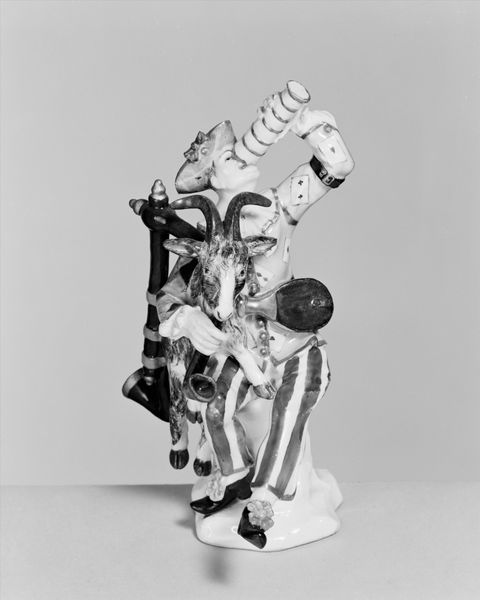
Red-and-blue-laced Suit of Armor from the Kii Tokugawa Family c. mid 17th century
0:00
0:00
mixed-media, metal, sculpture
#
mixed-media
#
medieval
#
metal
#
asian-art
#
japan
#
sculpture
#
armor
Copyright: Public Domain
Editor: Right in front of us we have this extraordinary suit of armor: the "Red-and-blue-laced Suit of Armor from the Kii Tokugawa Family", dating from around the mid-17th century. It's made of mixed media, metal primarily, and it looks unbelievably intricate. I'm struck by how ceremonial it feels, not really for battle. What can you tell me about this from a historical perspective? Curator: Well, you're right to sense the ceremonial aspect. Armor like this transcended mere protection; it became a potent symbol of power, status, and family lineage. The Tokugawa family, particularly the Kii branch, held significant political influence during the Edo period. What do you think the red and blue lacing signifies in that context? Editor: Hmm, the colours? Perhaps they're the family colours? I imagine only someone very important would have something so elaborately decorated. Curator: Exactly! The specific colours and the quality of the materials would have immediately signaled the wearer’s rank within the samurai hierarchy. The meticulous craftsmanship, the lavish use of lacquer and metalwork...it all speaks to a desire to project authority and wealth. Armor also played a crucial role in public displays, didn't it? Think of processions, ceremonies, and even theatrical performances. Editor: Oh, right! Like stage costumes, then. It's interesting how objects like this exist at the intersection of warfare, artistry and propaganda, of making a political point. Did these suits change much over time? Curator: They evolved alongside the shifting political landscape, adapting to reflect changing aesthetics and military technologies, but always retaining that core function of communicating power. The samurai class were increasingly becoming bureaucrats and ceremonial figures by this period, therefore such armour served more a symbolic function. Editor: That makes a lot of sense. I never thought of armor as being part of visual messaging like that. Thanks for shedding some light on the piece! Curator: My pleasure. Thinking about this suit as a socio-political statement really enriches our understanding of its artistry and design.
Comments
minneapolisinstituteofart almost 2 years ago
⋮
This elaborate suit of Japanese armor is a lightweight, form-fitting type designed to protect the body in close combat: with a face mask, forearm sleeves, thigh and shin guards, and bear-fur boots, every inch of the wearer’s body is protected. Its ownership can be traced to the Kii branch of the Tokugawa family, which ruled Japan for nearly 250 years, and it may have been made for Tokugawa Yorinobu, the founder of the branch. The craftspeople who constructed the armor used the utmost care, using elaborate and expensive materials. The small plates on the skirt consist of lacquered leather covered in gold foil and then covered in lacquer again, creating a metallic sheen. Creatures appear throughout the armor. The Chinese Four Guardians—the Azure Dragon, Vermilion Bird, White Tiger, and Black Tortoise—provided protection to the wearer. The praying mantis on the helmet suggested what the wearer of this armor would do to his enemies: cut them down.
Join the conversation
Join millions of artists and users on Artera today and experience the ultimate creative platform.
